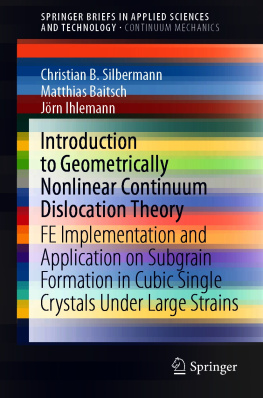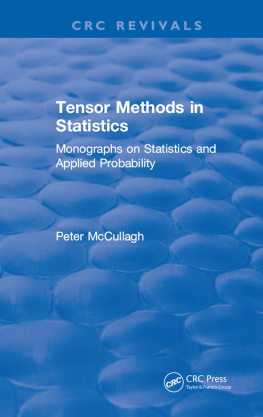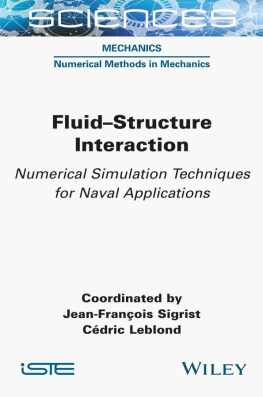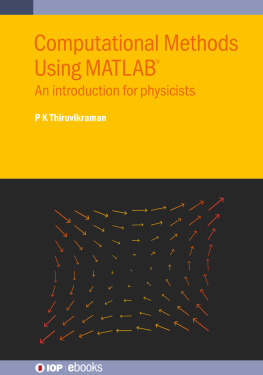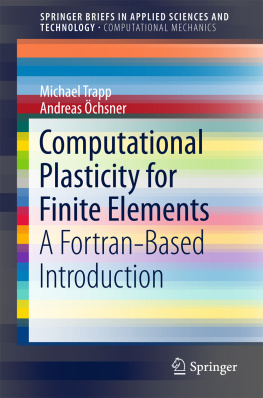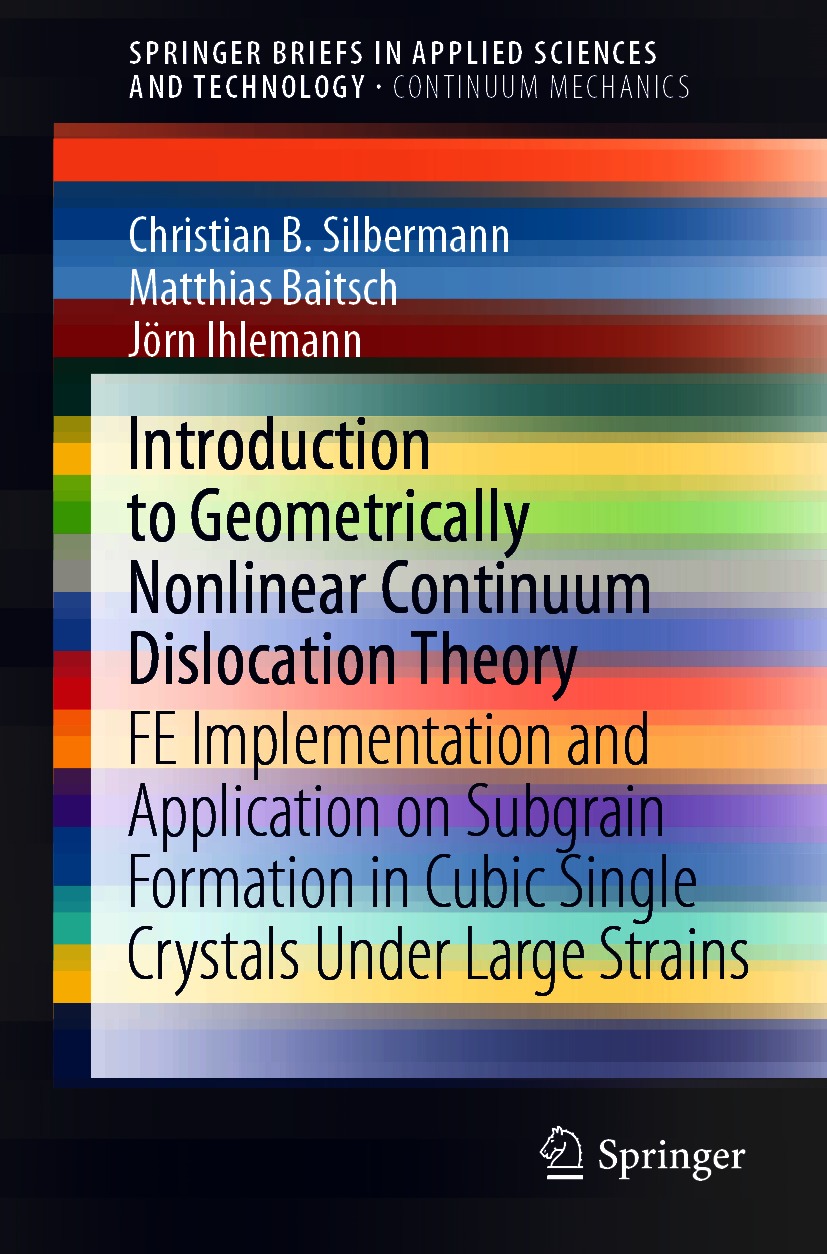SpringerBriefs in Applied Sciences and Technology SpringerBriefs in Continuum Mechanics
Series Editors
Holm Altenbach
Institut fr Mechanik, Lehrstuhl fr Technische Mechanik, Otto von Guericke University Magdeburg, Magdeburg, Sachsen-Anhalt, Germany
Andreas chsner
Faculty of Mechanical Engineering, Esslingen University of Applied Sciences, Esslingen am Neckar, Germany
SpringerBriefs present concise summaries of cutting-edge research and practical applications across a wide spectrum of fields. Featuring compact volumes of 50 to 125 pages, the series covers a range of content from professional to academic.
SpringerBriefs in Continuum Mechanics are devoted to the publication of fundamentals and applications, presenting concise summaries of cutting-edge research and practical applications across a wide spectrum of fields. Featuring compact volumes of 50 to 125 pages, the series covers a range of content from professional to academic.Typical publications can be:
More information about this subseries at
A timely report of state-of-the art methods
An introduction to or a manual for the application of mathematical or computer techniques
A bridge between new research results, as published in journal articles
A snapshot of a hot or emerging topic
An in-depth case study
A presentation of core concepts that students must understand in order to make independent contributions
http://www.springer.com/series/10528
SpringerBriefs are characterized by fast, global electronic dissemination, standard publishing contracts, standardized manuscript preparation and formatting guidelines, and expedited production schedules.
On the one hand,SpringerBriefs in Applied Sciences and Technology are devoted to the publication of fundamentals and applications within the different classical engineering disciplines as well as in interdisciplinary fields that recently emerged between these areas. On the other hand, as the boundary separating fundamental research and applied technology is more and more dissolving, this series is particularly open to trans-disciplinary topics between fundamental science and engineering.
Indexed by EI-Compendex, SCOPUS and Springerlink.
Christian B. Silbermann , Matthias Baitsch and Jrn Ihlemann
Introduction to Geometrically Nonlinear Continuum Dislocation Theory
FE Implementation and Application on Subgrain Formation in Cubic Single Crystals Under Large Strains
1st ed. 2021

Logo of the publisher
Christian B. Silbermann
Institute of Mechanics and Thermodynamics, Chemnitz University of Technology, Chemnitz, Germany
Matthias Baitsch
Bau- und Umweltingenieurwesen, Bochum University of Applied Sciences, Bochum, Germany
Jrn Ihlemann
Institute of Mechanics and Thermodynamics, Chemnitz University of Technology, Chemnitz, Germany
ISSN 2191-530X e-ISSN 2191-5318
SpringerBriefs in Applied Sciences and Technology
ISSN 2625-1329 e-ISSN 2625-1337
SpringerBriefs in Continuum Mechanics
ISBN 978-3-030-63695-1 e-ISBN 978-3-030-63696-8
https://doi.org/10.1007/978-3-030-63696-8
The Author(s), under exclusive license to Springer Nature Switzerland AG 2021
This work is subject to copyright. All rights are solely and exclusively licensed by the Publisher, whether the whole or part of the material is concerned, specifically the rights of translation, reprinting, reuse of illustrations, recitation, broadcasting, reproduction on microfilms or in any other physical way, and transmission or information storage and retrieval, electronic adaptation, computer software, or by similar or dissimilar methodology now known or hereafter developed.
The use of general descriptive names, registered names, trademarks, service marks, etc. in this publication does not imply, even in the absence of a specific statement, that such names are exempt from the relevant protective laws and regulations and therefore free for general use.
The publisher, the authors and the editors are safe to assume that the advice and information in this book are believed to be true and accurate at the date of publication. Neither the publisher nor the authors or the editors give a warranty, expressed or implied, with respect to the material contained herein or for any errors or omissions that may have been made. The publisher remains neutral with regard to jurisdictional claims in published maps and institutional affiliations.
This Springer imprint is published by the registered company Springer Nature Switzerland AG
The registered company address is: Gewerbestrasse 11, 6330 Cham, Switzerland
Preface
This book deals with solid continuum mechanics applied to crystal plasticity on a mesoscopic length scale. The formation of dislocation structures and subgrain boundaries is decisive for the macroscopic properties of metallic materials. To simulate and predict this, Gurtins established geometrically nonlinear mesoscopic theory of crystal plasticity with continuously distributed, geometrically necessary dislocations is adopted and specified. Here, the degrees of freedom essential for subgrain formation are available, while the number of phenomenological approaches and associated material parameters are kept as small as possible. With this continuum dislocation theory (CDT), it is proven that subgrain formation can be simulated. To this end, a minimalistic model of elastically and plastically anisotropic single crystal viscoplasticity is derived. Subsequently employing the finite element method (FEM), it is possible to follow the formation of subgrain boundaries during large plastic deformations of a crystallite. In addition, preparation and synthesis of algorithms for the numerical solution of the associated multi-field problem using the FEM are provided and aspects of thermodynamic consistency are discussed. Finally, proper experiments are suggested for the validation of the numerical results, and open problems are discussed for future research.
The intention of this book is threefold: Firstly, it presents a comprehensive introduction to single crystal plasticity with continuously distributed dislocations. Secondly, it provides a straightforward, extensive preparation for the implementation into FEM codes including solution algorithms in the context of a higher gradient theory. Thirdly, a simple simulation example introduces the characteristics of pattern forming systems and points out the numerical challenges involved in dealing with localization phenomena. Thus, the book may serve as a starting point for entering and contributing to the research in this interesting field of computational materials science.
This book is based on results previously published within Christian B. Silbermanns doctoral thesis (English title On the modeling of dislocation- and deformation-induced plastic localization phenomena of metallic materials, https://nbn-resolving.org/urn:nbn:de:bsz:ch1-qucosa2-359730 ).
Acknowledgements
This research was supported by German Science Foundation (DFG) within the Collaborative Research Center SFB 692 HALSHigh-strength aluminum-based lightweight materials for safety components. The authors are grateful to Prof. M. F.-X. Wagner, Prof. K. C. Le, M. Koster, Dr. Ralf Landgraf and Dr. Hendrik Donner for fruitful discussions. Moreover, the help of Hugh Wessel and the constructive criticism from the reviewers is acknowledged.

